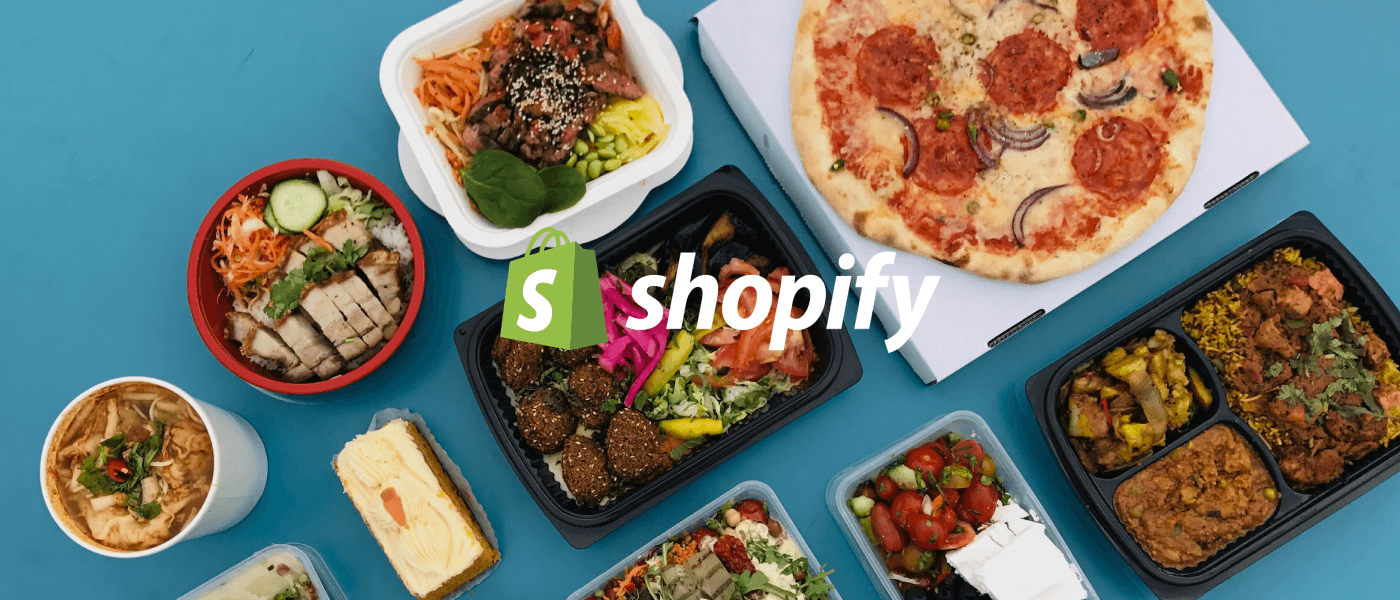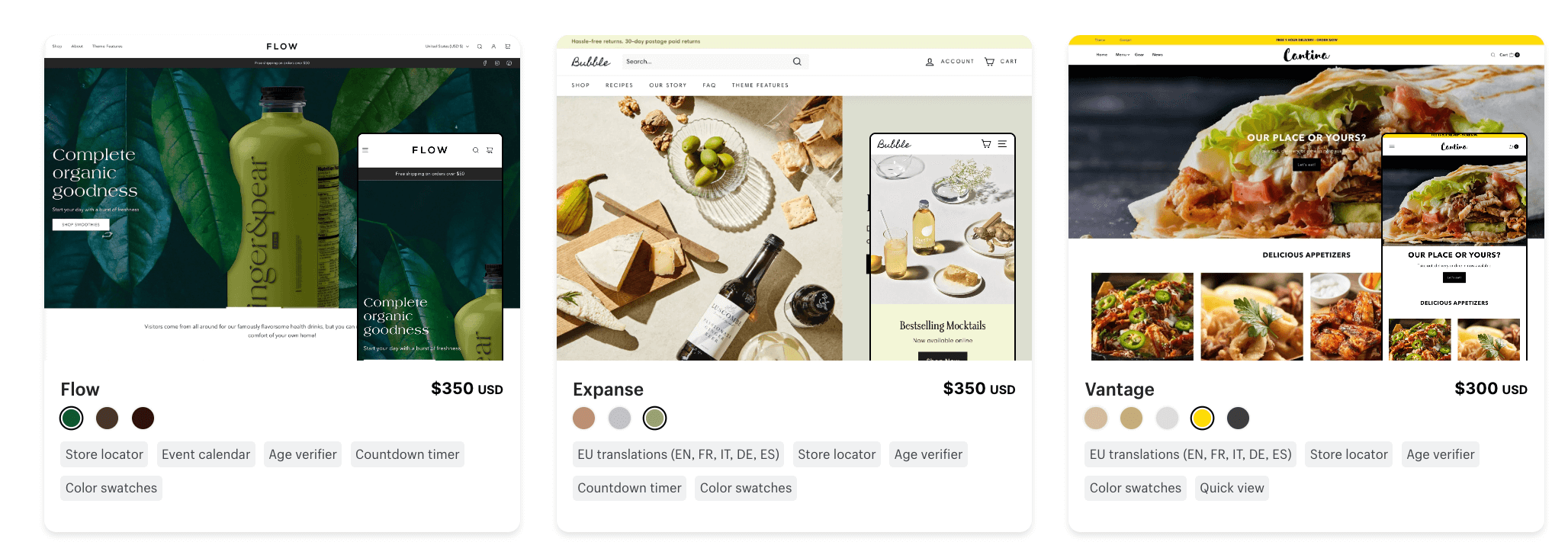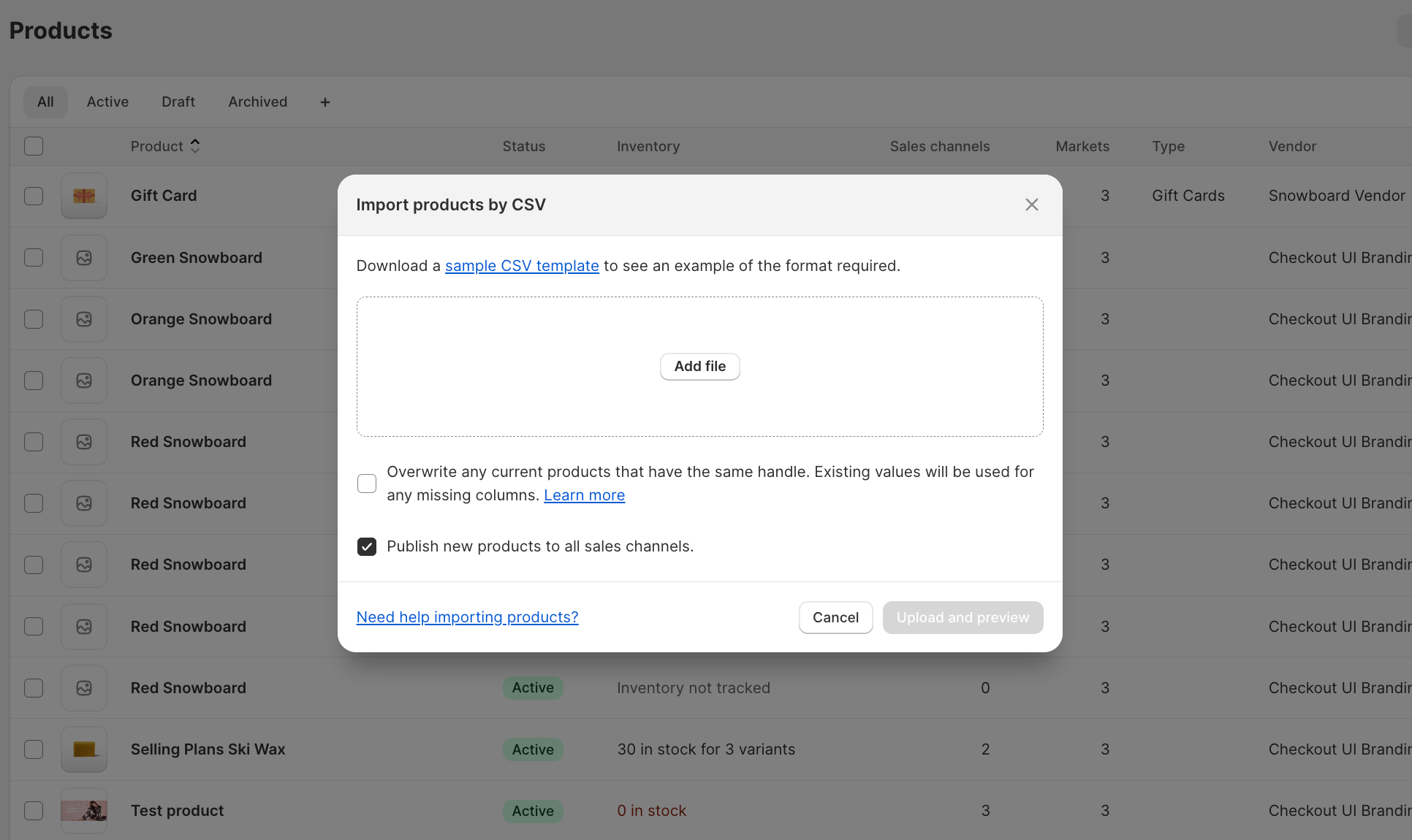10 Proven Strategies to Sell Food Online in US with Shopify
 October 04, 2023
October 04, 2023 Introduction: The Growing Trend of Selling Food Online in the US
In recent years, there has been a significant surge in the online food market in the United States. The convenience and accessibility of ordering food online have attracted a large number of customers, making it an ideal opportunity for food businesses to expand their reach and boost their sales. This article will provide you with 10 proven strategies to sell food online in US using the Shopify platform. Whether you have a small homemade food business or a larger operation, these strategies will help you establish a successful online presence and increase your revenue.
Why Sell Food Online?
Selling food online offers numerous advantages for food businesses. Firstly, it allows you to reach a wider customer base beyond your local area. With the increasing popularity of online food delivery services, customers are now more inclined to order their meals online rather than visiting physical restaurants or grocery stores. By selling food online, you can tap into this growing market and attract customers from all over the US.
Secondly, selling food online provides the convenience that customers crave. With just a few clicks, customers can browse through your menu, place their orders, and have their meals delivered right to their doorstep. This convenience factor is a major driving force behind the success of online food businesses.
Lastly, selling food online enables you to showcase your unique offerings and stand out from the competition. With visually appealing product photos and detailed descriptions, you can entice customers with your delicious offerings and create a memorable online shopping experience.
Legal Requirements for Selling Food Online in the US
Before diving into the world of online food sales, it is crucial to understand the legal requirements and regulations governing the sale of food in the US. The Food and Drug Administration (FDA) has specific guidelines that must be followed to ensure the safety and quality of food products sold online.
Firstly, you must obtain the necessary permits and licenses to legally sell food online. This includes obtaining a food handler's permit, a business license, and complying with any local health department regulations. It is important to research and understand the specific requirements in your state to avoid any legal complications.
Additionally, you must adhere to proper labeling and packaging regulations. All food products sold online must be accurately labeled with ingredients, nutritional information, and allergen warnings. Proper packaging is essential to maintain the freshness and quality of the food during transit.
Finally, it is crucial to maintain proper food safety practices. This includes storing, handling, and transporting food at appropriate temperatures to prevent contamination or spoilage. Regular inspections and monitoring of your food business will ensure compliance with food safety regulations.
Choosing the Right Platform: Why Shopify is a Great Option
When it comes to selling food online in the US, choosing the right e-commerce platform is essential. Shopify stands out as an excellent option for food businesses due to its user-friendly interface, robust features, and dedicated customer support.
One of the main advantages of Shopify is its ease of use. Even if you have limited technical knowledge, you can set up and manage your online store with ease. The platform offers a wide range of customizable templates and themes, allowing you to create a visually appealing and unique online store that aligns with your brand.
Another notable feature of Shopify is its extensive range of built-in tools and apps specifically designed for food businesses. These tools enable you to manage your inventory, track orders, and process payments seamlessly. In addition, Shopify integrates with various third-party delivery apps, making it easier to streamline your order fulfillment process.
Furthermore, Shopify offers excellent customer support, providing assistance whenever you encounter any issues or have questions about the platform. Their extensive documentation and knowledge base are also valuable resources that can help you navigate the world of online food sales.
Setting Up Your Shopify Store for Selling Food Online
Once you have chosen Shopify as your e-commerce platform, it's time to set up your online store for selling food. The first step is to select a domain name that reflects your brand and is easy for customers to remember. This domain name will be the web address for your online store.
Next, you need to choose a theme or template for your online store. Shopify offers a wide selection of professionally designed themes that are optimized for mobile devices, ensuring a seamless shopping experience for your customers. Select a theme that aligns with your brand's aesthetic and showcases your food products in an appealing way.
One of the top Shopify themes for the food market is "Foodie". This theme is perfect for showcasing your mouthwatering food products with its clean and modern design. It offers a variety of customization options, allowing you to easily create a unique and branded online store. With its responsive layout, your customers can easily browse and purchase your products on any device. The theme also includes features like a mega menu, product quick view, and social media integration, helping you to create an engaging and user-friendly shopping experience.
Another fantastic Shopify theme for the food market is "Gourmet". This theme is all about elegance and sophistication, perfect for those who want to create a high-end food market. With its stunning visuals and beautiful typography, this theme will make your products look even more delicious. It offers a range of layout options, allowing you to showcase your products in different ways. The theme also includes features like product filtering, multi-currency support, and a built-in blog, giving you everything you need to create a successful online food market.
After selecting a theme, it's time to customize your online store. Add your logo, choose your color scheme, and create compelling banners and images that showcase your food offerings. Make sure to optimize your website for fast loading speeds to enhance the user experience.
In addition, you should create a user-friendly navigation structure that allows customers to easily browse through different categories and locate their desired food products. Implementing a search function on your website can also help customers find specific items quickly.
Lastly, set up your payment gateway to enable secure and seamless transactions. Shopify integrates with various payment gateways, allowing customers to pay using their preferred method, such as credit cards, PayPal, or Apple Pay. Ensuring a smooth checkout process will minimize cart abandonment and maximize your sales.
Creating an Enticing Product Catalog
Now that your online store is set up, it's time to create an enticing product catalog that will capture the attention of your customers. High-quality product photos are essential for showcasing your food in an appealing way. Invest in professional photography or learn how to take captivating food photos yourself. Make sure to capture the colors, textures, and presentation of your dishes to entice customers.
In addition to visually appealing photos, provide detailed descriptions for each food item. Highlight the key ingredients, cooking methods, and any unique features that set your food apart. Include information about dietary restrictions or allergens to help customers make informed decisions.
To further enhance your product catalog, consider offering package deals or bundles. This can encourage customers to try multiple items and increase the average order value. Additionally, provide nutritional information for your food products to cater to health-conscious customers.
Regularly update your product catalog to introduce new items or seasonal specials. This will keep your offerings fresh and encourage customers to return to your online store for new experiences.
Building Trust and Credibility with Customer Reviews and Testimonials
In the world of online food sales, building trust and credibility is crucial. Customers want to feel confident in the quality and taste of the food they are ordering. One effective way to establish trust is by showcasing customer reviews and testimonials on your online store.
Encourage satisfied customers to leave reviews after their purchases. These reviews act as social proof and can significantly influence potential customers. Display these reviews prominently on your website to reassure visitors about the quality of your food.
In addition to customer reviews, consider partnering with influencers or food bloggers to promote your products. Their endorsements can have a powerful impact on customer purchasing decisions. Provide them with samples of your food and ask for their honest feedback, which can then be shared on your online store.
Responding to customer reviews, whether positive or negative, is equally important. Acknowledge positive feedback and express gratitude to your customers for their support. Address any negative reviews promptly and professionally, offering solutions or compensations when necessary. This demonstrates your commitment to customer satisfaction and builds trust with your audience.
Marketing Your Food Business Online
To succeed in selling food online, effective marketing strategies are essential. Here are a few proven techniques to promote your food business and attract customers:
- Social media marketing: Utilize popular social media platforms such as Instagram, Facebook, and Twitter to showcase your food, engage with customers, and run targeted advertising campaigns. Post mouth-watering food photos, share recipes, and offer exclusive promotions to generate buzz.
- Content marketing: Create a blog or recipe section on your website to share valuable content related to food. Provide cooking tips, dietary advice, and interesting food-related articles to establish your brand as an authority in the industry. This can drive organic traffic to your website and increase your visibility.
- Email marketing: Build an email list of interested customers and send regular newsletters with updates, promotions, and exclusive discounts. Personalize your emails and segment your audience to ensure relevant content and maximize conversion rates.
- Collaborations and partnerships: Collaborate with other businesses or food influencers to cross-promote each other's products. This can expand your reach and introduce your food to new audiences.
- Paid advertising: Consider investing in targeted online advertising campaigns, such as Google Ads or Facebook Ads, to reach a wider audience and drive traffic to your online store.
Remember to track and analyze the results of your marketing efforts to identify what strategies are working best for your food business. Continuously adapt and refine your marketing approach to maximize your online visibility and sales.
Shipping and Delivering Food Safely
Shipping and delivering food safely is of utmost importance to ensure customer satisfaction and maintain the quality of your food products. Here are some key strategies to implement:
- Packaging: Invest in high-quality, food-grade packaging materials that can withstand the rigors of shipping. Use insulated packaging and ice packs when necessary to maintain the freshness and temperature of perishable items. Clearly label packages with handling instructions and any necessary warnings.
- Shipping options: Offer various shipping options to cater to different customer needs. Consider partnering with reliable shipping carriers that specialize in food delivery to ensure timely and secure delivery.
- Order tracking: Provide customers with tracking information so they can monitor the progress of their orders. This increases transparency and reduces anxiety about the delivery process.
- Customer communication: Keep customers informed about the status of their orders through automated email notifications or SMS updates. Provide a dedicated customer service channel to address any delivery-related inquiries promptly.
- Returns and refunds: Establish a clear policy for returns and refunds in case customers are not satisfied with the delivered food. Make the process hassle-free for customers to maintain their trust and loyalty.
By prioritizing the safety and quality of your food during the shipping and delivery process, you can ensure a positive customer experience and build a solid reputation for your food business.
Managing Customer Service and Satisfaction
Excellent customer service is vital for the success of any online business, including food sales. Here are some strategies to effectively manage customer service and ensure customer satisfaction:
- Prompt response: Aim to respond to customer inquiries or complaints within 24 hours. Set up automated email responses to acknowledge receipt of their messages and provide an estimated timeframe for resolution.
- Professionalism and empathy: Maintain a professional and empathetic tone when communicating with customers. Understand their concerns and address them promptly and respectfully. Offer solutions or compensations when appropriate.
- Order accuracy and timeliness: Strive for order accuracy and timely fulfillment. Double-check all orders before shipping to minimize errors. Provide accurate delivery estimates and meet or exceed those estimates whenever possible.
- Personalization: Take the time to personalize your interactions with customers. Address them by name in emails or include handwritten notes in their packages. This personal touch can make customers feel valued and appreciated.
- Follow-up and feedback: After the delivery, follow up with customers to ensure their satisfaction. Ask for their feedback and suggestions for improvement. This demonstrates your commitment to continuous improvement and customer satisfaction.
Remember, satisfied customers are more likely to become repeat customers and recommend your food business to others. By prioritizing customer service, you can build a loyal customer base and establish a positive reputation in the online food market.
Scaling Your Food Business Online
As your food business grows, it is essential to have strategies in place to scale your operations effectively. Here are some key considerations for scaling your food business online:
- Streamline processes: Continuously evaluate your processes and identify areas where you can streamline operations. Implement automation tools and software to reduce manual work and increase efficiency.
- Expand your menu: Regularly introduce new dishes or expand your menu to cater to different customer preferences and dietary restrictions. This can attract new customers and keep existing customers interested in your offerings.
- Collaborate with suppliers: Establish strong relationships with your suppliers to ensure consistent and high-quality ingredients. Consider partnering with local farmers or specialty food producers to offer unique and sustainable options.
- Invest in marketing: Allocate a portion of your budget to marketing and advertising efforts. As your business grows, it becomes even more important to maintain your online visibility and attract new customers.
- Hire and train staff: As the demand for your food increases, you may need to hire additional staff to handle order fulfillment, customer service, and other aspects of your business. Invest in training to ensure consistent quality and customer service standards.
Scaling your food business requires careful planning and strategic decision-making. Regularly assess your growth and adapt your strategies accordingly to ensure sustainable success.
Conclusion: The Future of Selling Food Online in the US
The future of selling food online in the US is promising and presents a wealth of opportunities for food businesses. With the growing trend of online food ordering and delivery, it is crucial to establish a strong online presence and implement effective strategies to sell food online.
By following the 10 proven strategies outlined in this article, you can boost your food business and tap into the expanding online market. From choosing the right platform to scaling your operations, each step plays a crucial role in your success.
Embrace the convenience and accessibility of selling food online and provide customers with a seamless and satisfying shopping experience. With dedication, high-quality offerings, and effective marketing, your food business can thrive in the competitive online landscape.
Now is the time to take action and leverage the power of Shopify to sell food online in the US. Start implementing these strategies today and watch your food business flourish.
Ready to take your food business online? Get started with Shopify and unlock the potential of the US online market!











